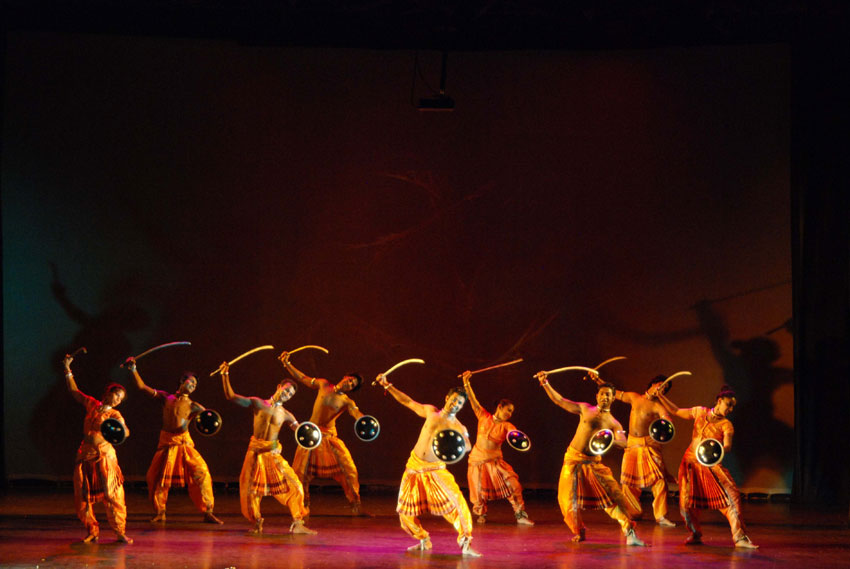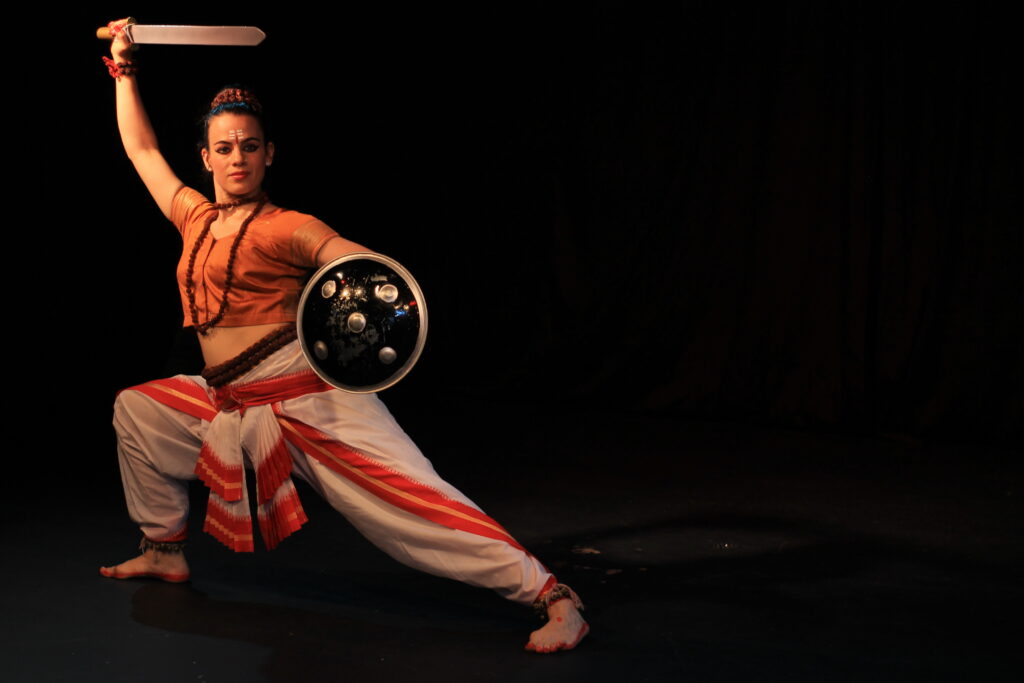The Chhau Dance of Mayurbhanj : Its Growth and Royal Patronage, India, boasts a rich cultural heritage. Among its many treasures is the Chhau dance, a vibrant and energetic traditional art form that has captivated audiences for centuries. With its unique blend of martial arts and storytelling, Chhau dance has found royal patronage, contributing to its growth and preservation throughout history.
Originating from the region’s tribal communities, Chhau dance is believed to have evolved from the martial practices of the soldiers of ancient times. The word “Chhau” is derived from the Sanskrit word “Chhaya,” meaning shadow or disguise. This term accurately depicts the essence of Chhau dance, as it involves the performers donning masks and costumes to portray various characters.
Over time, Chhau dance developed into three distinct styles: Mayurbhanj Chhau, Purulia Chhau, and Seraikella Chhau. Each style has its own unique characteristics, but all of them incorporate acrobatic movements, graceful gestures, and rhythmic footwork. The performers, known as “Chhau artists,” undergo rigorous training to master the intricate techniques and expressions required for this art form.
The growth and preservation of Chhau dance can be attributed to the royal patronage it received from the rulers of Mayurbhanj. The Bhanja dynasty, which ruled the region for several centuries, played a significant role in promoting and nurturing Chhau dance. The royals encouraged the development of the art form by establishing academies, sponsoring festivals, and providing financial support to the artists.

Under the royal patronage, the artists had the resources and encouragement they needed to refine their skills and pass on their knowledge to future generations. The academies set up by the rulers became training grounds for talented individuals, ensuring the continuity and evolution of Chhau dance.
One of the most influential figures in the growth of Chhau dance was Maharaja Sriram Chandra Bhanj Deo, the last ruler of Mayurbhanj. Maharaja Sriram Chandra Bhanj Deo was not only a passionate supporter of Chhau dance but also an accomplished dancer himself. His deep understanding and love for the art form led to a renaissance of Chhau dance in the early 20th century.
Maharaja Sriram Chandra Bhanj Deo founded the Mayurbhanj Chhau Nrutya Pratisthan, an organization dedicated to the promotion and preservation of Chhau dance. He organized various festivals and competitions, attracting artists from different parts of India and abroad. Through his efforts, Chhau dance gained recognition and appreciation on a national and international stage.
Even after independence and the abolition of royalty in India, Chhau dance continued to thrive due to the indomitable spirit of the artists and the support of the government. The Mayurbhanj Chhau Nrutya Pratisthan, now a cultural institution, continues its efforts to train new artists, organize festivals, and raise awareness about this unique art form.
Today, Chhau dance has acquired global recognition and has been celebrated at major festivals and events across the world. Its growth and preservation owe much to the royal patronage it received from the rulers of Mayurbhanj. Their vision, passion, and support have ensured the survival and flourishing of this art form, allowing it to enchant and enthrall audiences around the world.
You can read our another post on Our Human Rights Day

Write A FAQ For The Chhau Dance of Mayurbhanj : ItsGrowth and Royal Patronage
What is the Chhau Dance of Mayurbhanj?
The Chhau Dance of Mayurbhanj is a traditional folk dance form that originated in the Mayurbhanj district of Odisha, India. It is characterized by vibrant costumes, energetic movements, and the use of masks to portray various characters from mythology and folklore.
How did the Chhau Dance of Mayurbhanj evolve and grow over time?
The Chhau Dance of Mayurbhanj has evolved from its early roots as a ritualistic dance performed during religious ceremonies. Over time, it gained popularity as a form of entertainment and storytelling, attracting a wider audience. The dance form also received significant patronage from the royal family of Mayurbhanj, which further contributed to its growth and preservation.
What is the significance of royal patronage for the Chhau Dance of Mayurbhanj?
The royal patronage played a crucial role in the growth and preservation of the Chhau Dance of Mayurbhanj. The royal family provided financial support, resources, and opportunities for training and performance to the dancers and musicians associated with the art form. Their patronage helped elevate the status of the Chhau Dance and ensured its continuation through generations.
How is the Chhau Dance of Mayurbhanj different from other dance forms?
The Chhau Dance of Mayurbhanj is distinct from other dance forms due to its unique combination of martial arts, acrobatics, and storytelling. The use of masks to portray different characters is a significant feature that sets it apart. Additionally, the rhythmic movements and powerful expressions make the Chhau Dance of Mayurbhanj a visually stunning and captivating performance.
Is the Chhau Dance of Mayurbhanj still practiced today?
Yes, the Chhau Dance of Mayurbhanj is still practiced and performed today. It continues to be an important part of the cultural heritage of Odisha, and efforts are being made to promote and preserve this ancient dance form. Various institutions and organizations, along with the support of the government, are working towards training new generations of dancers and creating platforms for showcasing the Chhau Dance to a wider audience.
Conclusion
In conclusion, the Chhau Dance of Mayurbhanj stands as a testament to the rich cultural heritage of the region. Its growth and preservation can be attributed to the royal patronage it received throughout history. The dedication of the artists, combined with the support of the rulers and the government, has elevated Chhau dance to a prominent position in the world of performing arts. As it continues to mesmerize audiences with its vibrant movements and captivating storytelling, Chhau dance remains a true gem of Mayurbhanj.

